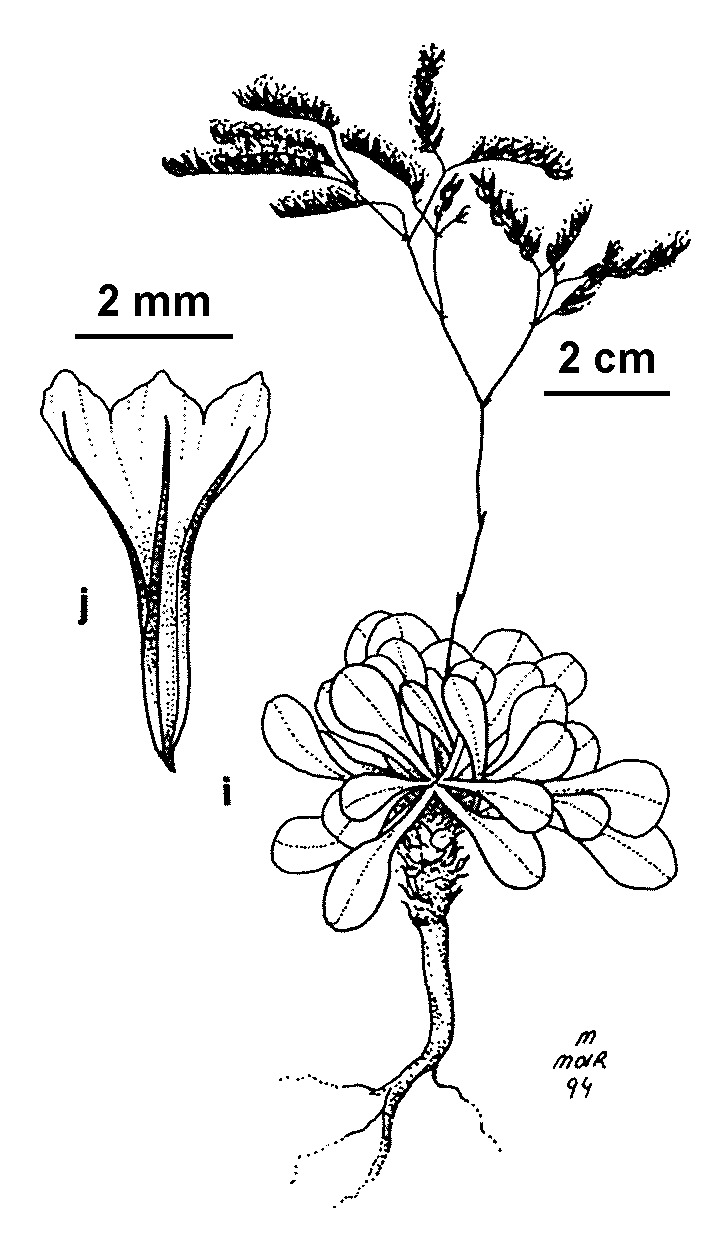Limonium hyblaeum
BrulloGlabrous perennial with erect flowering stems, 10–25 cm high. Leaves in 1–several rosettes at base, sometimes forming dense mounds, lamina broadly spathulate, 15–45 mm long, 7–17 mm wide, tapered abruptly to narrowed base, apex rounded or truncate. Inflorescence ovate to corymbose, with branches mostly simple, more or less distichous, ascending from the flexuose main axis; spikelets mostly 2(occasionally 3)-flowered, more or less evenly arranged along the the distal 2–6 cm of branches; outer and middle bract broadly ovate to obovate, scarious, both c. 2 mm long, inner bract elliptic, thickened but with membranous margins, c. 5 mm long; calyx c. 5 mm long, the tube c. 3 mm long, with short inclined hairs in the lower part, the limb c. 3 mm diam., pinkish fading to white, the brownish midribs extending to within 0.5–1 mm from the obtuse lobes; corolla lobes broadly emarginate, bright pink. Capsule 5-angled toward apex, irregularly dehiscent. Seed fusiform, c. 2 mm long, reddish-brown. Flowers mainly Mar.–Aug.
VVP, MSB, GipP, WaP. Also naturalised WA, SA. Native to Sicily. In Victoria, known only from coastal saltmarsh on basaltic clay at Port Fairy, Moolap (on the Bellarine Peninsula), Phillip Island, and near Mildura but probably more widespread (as along the South Australian coast where also occurring on limestone).
Very similar to Limonium companyonis which, as well as features given in key, has relatively narrower, more gradually tapered leaves, a more slender, and a less branched rootstock.
Walsh, N.G. (1996). Plumbaginaceae. In: Walsh, N.G.; Entwisle, T.J., Flora of Victoria Vol. 3, Dicotyledons Winteraceae to Myrtaceae, pp. 296–299. Inkata Press, Melbourne.
 Spinning
Spinning



